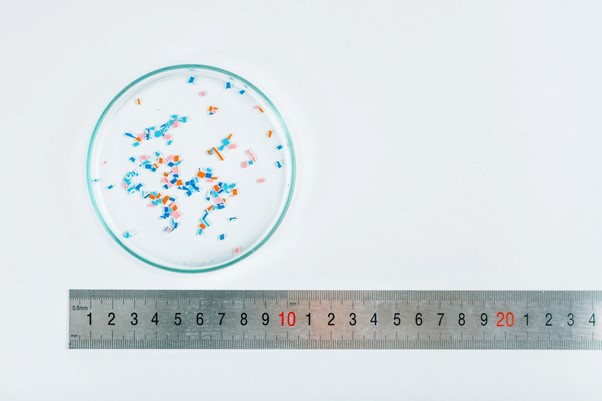Airborne microplastics recognised as a serious health threat

We are all aware of the threat that microplastics cause to the environment. Because of their microscopic size, plastic particles can be ingested by a wide variety of marine organisms and become part of our food chain.
That represents an indirect health threat, but there is also a direct health threat that is far closer to home – airborne microplastics. That threat that can be neutralised with HEPA-based air purification.
A problem 100 times worse than feared
In November 2021 a Portsmouth University study revealed that we inhale up to 7,000 airborne microplastic particles every day. The research used highly sensitive equipment to count tiny particles less than 10 microns in size – just a tenth of the width of a human hair. The findings of the study were described as being “100 times worse than feared” and posing a potential health threat that could rank alongside asbestos or tobacco.
Indoor plastic air pollution has received relatively little attention to date but Professor Anoop Chauhan, a respiratory specialist with Portsmouth Hospitals Trust, argues microplastics are dangerous because they do not break down: “Having these particles in your body can cause stress and changes in metabolism, it can affect immunity, the ability to fight infections, it can affect your reproductive capacity and potentially it could be carcinogenic – causing cancer.”
Evidence found in the lungs of hospital patients
Now, a July 2022 study by Hull York Medical School has found microplastics deep in the lungs of living people for the first time. Samples of healthy lung tissue were taken from 13 patients undergoing surgery, with microplastic particles found in 11 of the samples analysed.
Hull York Medical School used μFTIR spectroscopy to analyse particles down to 30 microns, the most common types being polypropylene, used in plastic packaging and pipes, and PET, used in bottles. The researchers found the highest number of particles concentrated in the lower regions of the lungs. This was surprising as airways are smaller there and one would have expected the particles to be filtered out or trapped before getting so deep into the lungs.
More conclusive research urgently needed
The Forum of International Respiratory Societies asserts that “Air pollution can harm acutely, as well as chronically, potentially affecting every organ in the body”. Although inhaled plastic fibres have been found in cancerous lung specimens, the extent of harm caused by the inhalation of microplastics particles is not yet proven.
Given the exponential rise in plastic across the planet, more research is needed on how it affects the structures and processes of the human body, and whether it can transform cells and induce carcinogenesis.
London microplastic particle count relatively high
A study of microplastic pollution in the air, conducted in 2019 by scientists at Kings College London, found plastic particulates in all 8 samples, with deposition rates ranging from 575 to 1,008 pieces per sq metre per day.
The rate of microplastic deposition measured in London was 20 times higher than in Dongguan, China, seven times higher than in Paris, France and nearly three times higher than Hamburg, Germany. The microplastic particle samples collected in London were as small as 20 microns, which can travel deep into the lungs.
Existing risk mitigation measure applicable
The best instant solution is a portable air purifier that uses HEPA filtration (with pre-filters to capture the largest particles and protect the filter) and a powerful fan to ensure full air circulation throughout an entire space.
Air purification using HEPA filtration is proven as highly effective in trapping particulate matter across a range of sizes. Particle types captured include viruses, bacteria, allergens, mould, dust, smoke and vehicle emission particulates.
HEPA filtration is an equally effective countermeasure for microplastics particles and is 100% effective at trapping particles over 10 microns in size. Smaller particles are trapped with an efficacy of at least 99.97%, down to 0.01 of a micron.
By using a well-engineered portable hospital grade air purifier, the indoor air environment can be clear of microplastics, providing a safe space for occupants.
